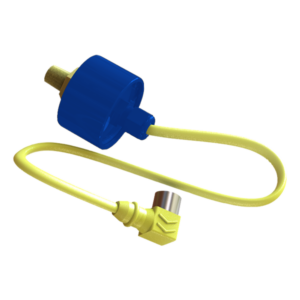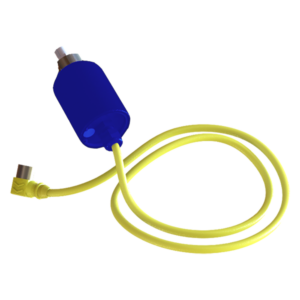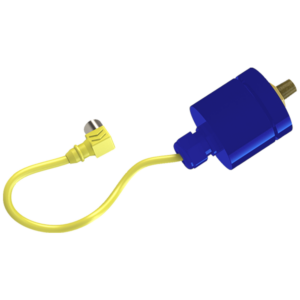Pressure Transducers
Pressure transducers provide precise measurement and control of pressure in various processes. They convert pressure into an electrical signal, which can then be monitored and controlled to ensure optimal performance and safety. A key role of transducers is to maintain consistent pressure levels in pneumatic systems.
Proportion-Air Pressure Transducer Benefits
Proportion-Air pressure transducers deliver accurate and real-time pressure data, helping to improve process efficiency, product quality, and equipment longevity for a wide range of customers. Our team is known as a technology leader in proportional electro-pneumatic pressure and flow control, offering the advantages of:
- Accuracy
- Reliability
- Cost-Effectiveness
- Integration Support
- Compliance Assurance
Have any questions? Visit our FAQs below to look for your question.
DS-Series Industrial Pressure Transducers
DS-Series pressure transducers accurately measure the pressure of gases and/or fluids in industrial and laboratory processes. The output is a proportional electronic signal based on the measured pressure. The conditioned output of this electrical signal (from the strain gauge sensor) gives either 0-10 VDC or 4-20 mA output (consult factory for other available outputs).
The electrical analog output is a linear ratio of the pressure sensed. DS-Series pressure transducers are enclosed in a rugged aluminum housing. A strain relief protects the wiring from damage caused by excessive pulling force.
DSB Industrial Pressure Transducer
- Standard version
- Measures pressure using a piezo-resistive, semiconductor sensor chip
- Industrial pressure transducer designed for accuracy (±0.2%), repeatability and durability measuring from full vacuum to 175 PSI (12 Bar)
DST High Pressure Transducer
- Uses the same silicon etched device mounted on a stainless steel diaphragm
- No elastomers or o-rings contact the pressurized media.
- All wetted parts are ANSI type 316L stainless steel
- High pressure transducers employ a stainless steel sensor
- Measures non-corrosive gases, liquids and some hazardous/caustic medias from full vacuum to 7,500 PSI (517 Bar)
DSW NEMA4 Pressure Transducer
- Electrically identical to the DSB
- DSW is housed in a slightly larger canister – sealed against fluid spray from any direction
- Housing protects against dust and water jet ingress while measuring pressure from full vacuum to 175 PSI (12 bar).
Frequently Asked Questions
The lifespan varies depending on the operating conditions and maintenance practices but typically ranges from several years to over a decade. Factors such as exposure to harsh environments, internal contamination, shock and vibration, electrical overstress, and overpressure events can impact longevity. Operating within the specified operating limits will maximize life.
Yes, pressure transducers can be repaired, but it is best done by experts due to the sensitive nature of components like strain gauge or MEMs pressure sensing elements. DIY repairs are not recommended. Our RMA department can help with warranty claims and repairs.
Check for proper installation, verify electrical connections, inspect for damage, ensure the power supply is correct, and perform recalibration if needed. Recalibration requires a known pressure source.
Proportion-Air stand alone transducers do not carry hazardous area approvals. The DST series stainless steel wetted part can handle non-corrosive gasses and liquids, but cannot be used in a hazardous (classified) location.
Calibration is performed by comparing the transducer’s output with a known pressure standard and adjusting it accordingly. This ensures accurate pressure readings.
All transducers are built with durable aluminum housings. The DSW series is a NEMA4 device, housed in a sealed canister that protects against dust and water jet ingress
Maintenance involves periodic calibration, inspecting for physical damage, checking connections, and cleaning the sensor element if applicable.
Gauge pressure is referenced to the local barometric pressure conditions. This reference changes slightly with atmospheric highs and lows, and larger changes with elevation. Absolute pressure sensors and transducers are referenced to full vacuum, like found in space. This reference does not change with barometric pressure and elevation. Differential pressure is the difference in pressure between two points.
Yes, pressure transducers can be cleaned to maintain accuracy. Contaminants from the environment or working fluid can affect performance, so regular cleaning is essential.
Refer to the manufacturers recommended procedures to avoid damaging the sensor.



